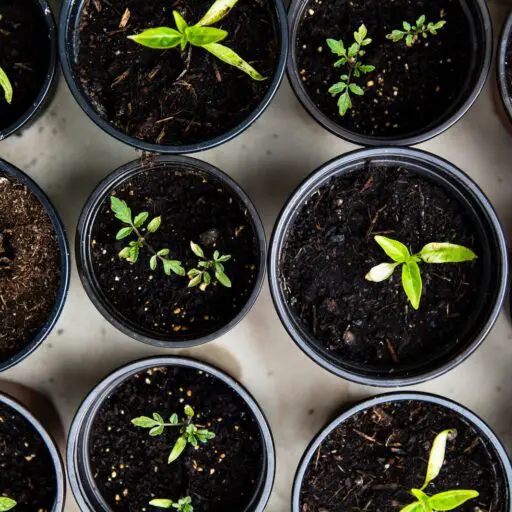Support our educational content for free when you purchase through links on our site. Learn more
Community gardens have become increasingly popular in recent years, and for good reason. These green spaces not only provide a place for people to grow their own food, but they also offer a range of benefits that address various social, environmental, and health-related issues. In this article, we will explore the problems that community gardens solve and how they contribute to the well-being of individuals and communities.
Table of Contents
- Quick Answer
- Quick Tips and Facts
- The Problem: Limited Access to Fresh Produce
- The Problem: Lack of Outdoor Exercise and Social Interaction
- The Problem: Poor Air and Soil Quality
- The Problem: Crime and Safety Concerns
- The Problem: Cultural Differences and Community Building
- The Problem: Gardener Drop-Out
- The Problem: Theft and Vandalism
- FAQ
- Conclusion
- Recommended Links
- Reference Links
Quick Answer
Community gardens solve a range of problems, including limited access to fresh produce, lack of outdoor exercise and social interaction, poor air and soil quality, crime and safety concerns, cultural differences and community building, and gardener drop-out. By addressing these issues, community gardens contribute to healthier and more sustainable communities.
Quick Tips and Facts
- Community gardens provide individuals with access to fresh, locally grown produce.
- Engaging in gardening activities promotes outdoor exercise and social interaction.
- Community gardens improve air and soil quality by reducing pollution and promoting biodiversity.
- Crime rates tend to decrease in areas with community gardens.
- Community gardens foster community building and help bridge cultural differences.
- Implementing strategies to prevent gardener drop-out is crucial for the success of community gardens.
- Theft and vandalism can be mitigated through community engagement and security measures.
Now, let’s delve deeper into each of these problems and explore the solutions that community gardens offer.
The Problem: Limited Access to Fresh Produce
Bold Tip: Many individuals, especially those living in urban areas, face limited access to fresh and affordable produce. This lack of access contributes to poor nutrition and health disparities.
Community gardens provide a solution to this problem by offering individuals the opportunity to grow their own fruits, vegetables, and herbs. By cultivating their own food, people can ensure a steady supply of fresh produce, reducing their reliance on expensive and often unhealthy store-bought options. Community gardens also promote sustainable and organic gardening practices, leading to healthier food choices.
Interesting Fact: According to a study published in the Journal of Hunger & Environmental Nutrition, community gardeners consume fruits and vegetables 1.4 times more frequently than non-gardeners.
Bold Tip: To further enhance access to fresh produce, community gardens can collaborate with local food banks and organizations to distribute surplus harvests to those in need.
The Problem: Lack of Outdoor Exercise and Social Interaction
Bold Tip: In today’s fast-paced and technology-driven world, many people spend less time outdoors and have limited opportunities for physical activity and social interaction.
Community gardens provide a space for individuals to engage in outdoor exercise while tending to their plants. Gardening activities such as digging, planting, and weeding can be physically demanding and contribute to overall fitness. Additionally, community gardens foster social interaction by bringing people together who share a common interest in gardening and sustainable living.
Interesting Fact: A study published in the American Journal of Public Health found that community gardeners have significantly lower body mass index (BMI) scores compared to non-gardeners.
Bold Tip: To encourage social interaction, community gardens can organize workshops, educational programs, and social events that bring gardeners and community members together.
The Problem: Poor Air and Soil Quality
Bold Tip: Urban areas often suffer from poor air quality due to pollution from vehicles, factories, and other sources. Additionally, soil quality in urban environments may be contaminated with heavy metals and other pollutants.
Community gardens play a vital role in improving air and soil quality. Through the process of photosynthesis, plants absorb carbon dioxide and release oxygen, helping to reduce air pollution. Moreover, community gardens promote the use of organic gardening practices, which minimize the use of synthetic fertilizers and pesticides, leading to healthier soil and reduced contamination.
Interesting Fact: According to a study published in the journal Environmental Science & Technology, community gardens can significantly reduce air pollution by absorbing pollutants such as nitrogen dioxide and particulate matter.
Bold Tip: To further enhance air and soil quality, community gardens can implement composting programs to recycle organic waste and enrich the soil with nutrient-rich compost.
The Problem: Crime and Safety Concerns
Bold Tip: High crime rates and safety concerns can deter individuals from spending time outdoors and engaging in community activities.
Community gardens have been shown to reduce crime rates in their surrounding areas. The presence of well-maintained green spaces and active community engagement can deter criminal activities. Additionally, community gardens provide a sense of ownership and pride among gardeners, leading to increased vigilance and a safer environment.
Interesting Fact: A study conducted by the University of Pennsylvania found that vacant lots converted into community gardens experienced a significant decrease in gun violence and other crimes.
Bold Tip: To enhance safety in community gardens, implementing security measures such as installing fences, locked gates, and security cameras can help deter theft and vandalism.
The Problem: Cultural Differences and Community Building
Bold Tip: Cultural differences and lack of community cohesion can hinder the development of strong and inclusive communities.
Community gardens serve as a platform for fostering community building and bridging cultural differences. By bringing people from diverse backgrounds together, community gardens provide an opportunity for individuals to learn from one another, share knowledge, and develop a sense of belonging. Through shared gardening experiences, people can build relationships, promote understanding, and create a more inclusive community.
Interesting Fact: A study published in the Journal of Community Practice found that community gardens contribute to social capital by strengthening social networks and fostering a sense of community.
Bold Tip: To promote community building, community gardens can organize regular meetings, workshops, and social events that encourage interaction and collaboration among gardeners and community members.
The Problem: Gardener Drop-Out
Bold Tip: One common challenge faced by community gardens is gardener drop-out, where individuals lose interest or are unable to continue maintaining their plots. This can lead to overgrown areas, pest infestations, and a decline in overall garden productivity.
To address this problem, community gardens can implement strategies to prevent gardener drop-out. Some effective solutions include:
- Collecting Annual Dues: By collecting annual dues from gardeners, community gardens can ensure a commitment to maintaining their plots.
- Implementing a Forfeiture Policy: Establishing a forfeiture policy that outlines the consequences of neglecting or abandoning a plot can encourage gardeners to remain engaged and committed.
Bold Tip: Regular communication and education programs can also help gardeners stay motivated and provide them with the necessary knowledge and skills to maintain their plots effectively.
The Problem: Theft and Vandalism
Bold Tip: Theft and vandalism can be occasional problems in community gardens, leading to frustration and a loss of resources.
To mitigate theft and vandalism, community gardens can implement the following solutions:
- Community Engagement: Educating the community about the purpose and value of the garden can help deter theft and vandalism. By fostering a sense of ownership and pride, community members are more likely to protect and respect the garden.
- Security Measures: Installing fences, locked gates, and security cameras can help deter potential thieves and vandals. Marking tools and equipment with the garden’s name or logo can also make them less attractive to thieves.
Bold Tip: Community gardens can also collaborate with local law enforcement agencies to develop neighborhood watch programs or establish regular patrols in the area.
FAQ
What problem does gardening solve?
Gardening, including community gardening, solves various problems such as limited access to fresh produce, lack of outdoor exercise and social interaction, poor air and soil quality, crime and safety concerns, cultural differences and community building, and gardener drop-out. By addressing these issues, gardening contributes to healthier and more sustainable communities.
Read more about “… What are the Benefits of Community Gardening on Quality of Life Issues?”
What are the goals of a community garden?
The goals of a community garden include:
- Providing individuals with access to fresh and affordable produce.
- Promoting outdoor exercise and social interaction.
- Improving air and soil quality.
- Reducing crime rates and enhancing safety.
- Fostering community building and bridging cultural differences.
- Preventing gardener drop-out and maintaining productive plots.
Read more about “Are Community Gardens Profitable in 2023? …”
What social issues can be impacted by community gardens?
Community gardens can impact various social issues, including:
- Limited access to fresh produce.
- Lack of outdoor exercise and social interaction.
- Poor air and soil quality.
- High crime rates and safety concerns.
- Cultural differences and lack of community cohesion.
Read more about “Improving Communities: How Community Gardens Impact Social Issues …”
How can community gardens contribute to healthier communities?
Community gardens contribute to healthier communities by providing individuals with access to fresh produce, promoting outdoor exercise and social interaction, improving air and soil quality, reducing crime rates, fostering community building, and preventing gardener drop-out.
Conclusion
Community gardens are more than just spaces to grow plants; they are powerful solutions to a range of social, environmental, and health-related problems. By addressing issues such as limited access to fresh produce, lack of outdoor exercise and social interaction, poor air and soil quality, crime and safety concerns, cultural differences, and gardener drop-out, community gardens contribute to healthier and more sustainable communities. So, whether you’re looking to grow your own food, connect with your neighbors, or make a positive impact on the environment, consider joining or starting a community garden near you.
Recommended Links
- Benefits of Community Gardens
- Community Garden Policies
- Community Garden Events
- Interior
- [2023] What are the Benefits of Community Gardening on Quality of Life Issues?




